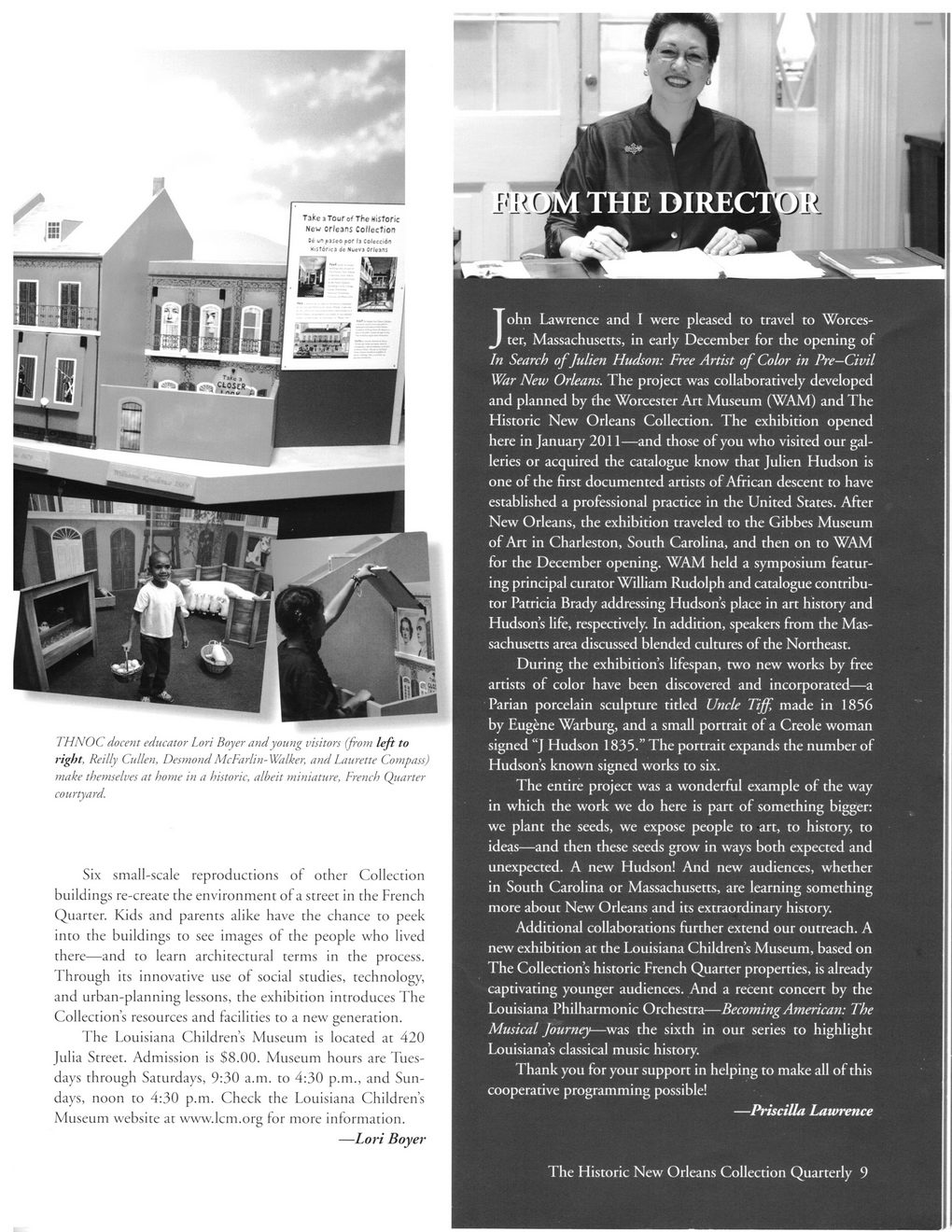This text was obtained via automated optical character recognition.
It has not been edited and may therefore contain several errors.
THNOC docent educator Lori Boyer and young visitors (from left to right, Reilly Cullen, Desmond McFarlin- Walker, and Laurette Compass) make themselves at home in a historic, albeit miniature, French Quarter courtyard. Six small-scale reproductions of other Collection buildings re-create the environment of a street in the French Quarter. Kids and parents alike have the chance to peek into the buildings to see images of the people who lived there—and to learn architectural terms in the process. Through its innovative use of social studies, technology, and urban-planning lessons, the exhibition introduces The Collection’s resources and facilities to a new generation. The Louisiana Children’s Museum is located at 420 Julia Street. Admission is $8.00. Museum hours are Tuesdays through Saturdays, 9:30 a.m. to 4:30 p.m., and Sundays, noon to 4:30 p.m. Check the Louisiana Children’s Museum website at www.lcm.org for more information. —Lori Boyer r,' r r* I John Lawrence and I were pleased to travel to Worcester, Massachusetts, in early December for the opening of In Search of Julien Hudson: Free Artist of Color in Pre—Civil War New Orleans. The project was collaboratively developed and planned by the Worcester Art Museum (WAM) and The Historic New Orleans Collection. The exhibition opened here in January 2011—and those of you who visited our galleries or acquired the catalogue know that Julien Hudson is one of the first documented artists of African descent to have established a professional practice in the United States. After New Orleans, the exhibition traveled to the Gibbes Museum of Art in Charleston, South Carolina, and then on to WAM for the December opening. WAM held a symposium featuring principal curator William Rudolph and catalogue contributor Patricia Brady addressing Hudson’s place in art history and Hudsons life, respectively. In addition, speakers from the Massachusetts area discussed blended cultures of the Northeast. During the exhibitions lifespan, two new works by free artists of color have been discovered and incorporated—a Parian porcelain sculpture titled Uncle Tiff, made in 1856 by Eugene Warburg, and a small portrait of a Creole woman signed “J Hudson 1835.” The portrait expands the number of Hudsons known signed works to six. The entire project was a wonderful example of the way in which the work we do here is part of something bigger: we plant the seeds, we expose people to art, to history, to ideas—and then these seeds grow in ways both expected and unexpected. A new Hudson! And new audiences, whether in South Carolina or Massachusetts, are learning something more about New Orleans and its extraordinary history. Additional collaborations further extend our outreach. A new exhibition at the Louisiana Children’s Museum, based on The Collections historic French Quarter properties, is already captivating younger audiences. And a recent concert by the Louisiana Philharmonic Orchestra—Becoming American: The Musical Journey—was the sixth in our series to highlight Louisiana’s classical music history. Thank you for your support in helping to make all of this cooperative programming possible! —Priscilla Lawrence The Historic New Orleans Collection Quarterly 9

New Orleans Quarterly 2012 Winter (09)